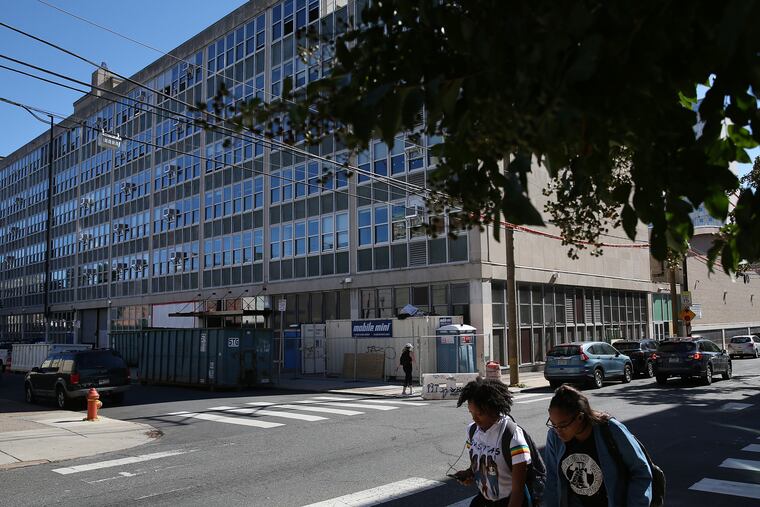The Ben Franklin and SLA asbestos crisis is a symptom of a bigger disease | Opinion
Advertised as a system that rewards the hardest-working students, the City's selective admissions process is a civil rights violation hidden in plain sight.

Don’t be fooled by the headlines. The city’s big education story right now is that almost 1,000 district students cannot go to school, thanks to construction delays and asbestos contamination in the Benjamin Franklin High School building where Science Leadership Academy students were also to matriculate this fall. The district’s failure to preempt this problem deserves attention. But this is not a one-off disaster. It reflects a much deeper issue facing our education system.
This disruptive start to the school year illustrates the farce of the high school selection process, ironically branded “Find Your Fit.” Annually every eighth-grade student in Philadelphia can apply to a handful of prestigious Special Admission high schools and opt out of their designated neighborhood high school. To gain admission, students must demonstrate strong character and academic performance. Advertised as a system that rewards the hardest-working students, the selective admissions process is a civil rights violation hidden in plain sight.
At an emergency meeting for SLA families, the school district pitched a plan to temporarily relocate displaced students to neighborhood school Strawberry Mansion. Parents were outraged, faced with the prospect of sending their students from a school that hosted President Barack Obama to Strawberry Mansion, a school visited by Diane Sawyer for a special report after it had spent six years on Pennsylvania’s list of “persistently dangerous” schools.
The disparity speaks volumes about inequity in Philadelphia public schools.
According to the District’s School Progress Report, nearly half of high school students attend schools, like Mansion, that “require immediate attention and assistance.” Ben Franklin is in that group too. When SLA scholars finally join the ranks of their Ben Franklin “peers” in January, students coexisting in the same building will still receive starkly different educations.
The dramatic contrasts are not accidental. Attractive magnet programs like SLA were created to incentivize white families to remain in the city instead of fleeing to the suburbs as public schools integrated in the 1960s. Policies that were once blatantly racist have evolved into performance thresholds that accomplish the same result. Selective admissions policies calcify gross disparities in elementary schools, instead of improving opportunities.
» READ MORE: What Philadelphia school parents need to know about asbestos at Ben Franklin/SLA
For example, a consistent lack of investment and neglect led up to last year’s discovery that Olney Elementary had millions of asbestos fibers. Meanwhile, Albert M. Greenfield Elementary received the National Blue-Ribbon Award. Believing that students attending Olney and Greenfield have equal chances at gaining admissions to special admission high schools is preposterous. Yet this presumption is embedded in the District’s “Find Your Fit” campaign.
According to a report by the Pew Charitable Trust,in five high-income Center City and Northwest zip codes, more than half of eighth graders in public schools landed in special admission high schools — yet less than 25 percent of eighth graders did the same in much of West Philadelphia, North Philadelphia, and the Northeast.
School segregation is not limited to economic status. “More than half of the nation’s schoolchildren are in racially concentrated districts, where over 75 percent of students are either white or nonwhite,” the New York Times recently reported. This divide is evident in Philadelphia’s special admission versus neighborhood high schools. As reported by the District, SLA has 37% white and 35% black students, while Ben Franklin has 2% white and 84% black students; 84% of SLA graduates matriculate into college, while only 20% of Franklin’s seniors enroll.
We know many students lack the resources that would help them gain admission into selective magnet programs. Should any student have to earn the right to a high-quality education? And as members of the Benjamin Franklin and SLA school communities have asked: Why didn’t the building’s toxic threats attract this much attention until the wealthier, whiter SLA student group showed up?
» READ MORE: What Philadelphia school parents need to know about asbestos at Ben Franklin/SLA
The District’s endorsement of a system that creates separate and unequal educations is a far greater offense than failing to complete renovations before the start of this school year.
But before completing the Ben Franklin renovations, the District has an opportunity to set a new precedent by actually combining the schools into one. Students and teachers can share resources — and bond over the challenging start of the school year. If such a change sees resistance to the equal allocation of resources, we need to confront our beliefs about education as a civil right.
Indeed, this building mishap could be a catalyst for transformation. The current tracking system should be revamped, perhaps eliminated. Unequal tools create unequal outcomes. Don’t be distracted by the noise, and don’t become complacent when the dust settles. Let’s demand schools “fit” for all of our students.
AJ Ernst is a doctoral student at Penn Graduate School of Education studying the link between high school admissions and the school-to-prison pipeline. He has worked as an educator in Philadelphia for the past decade.